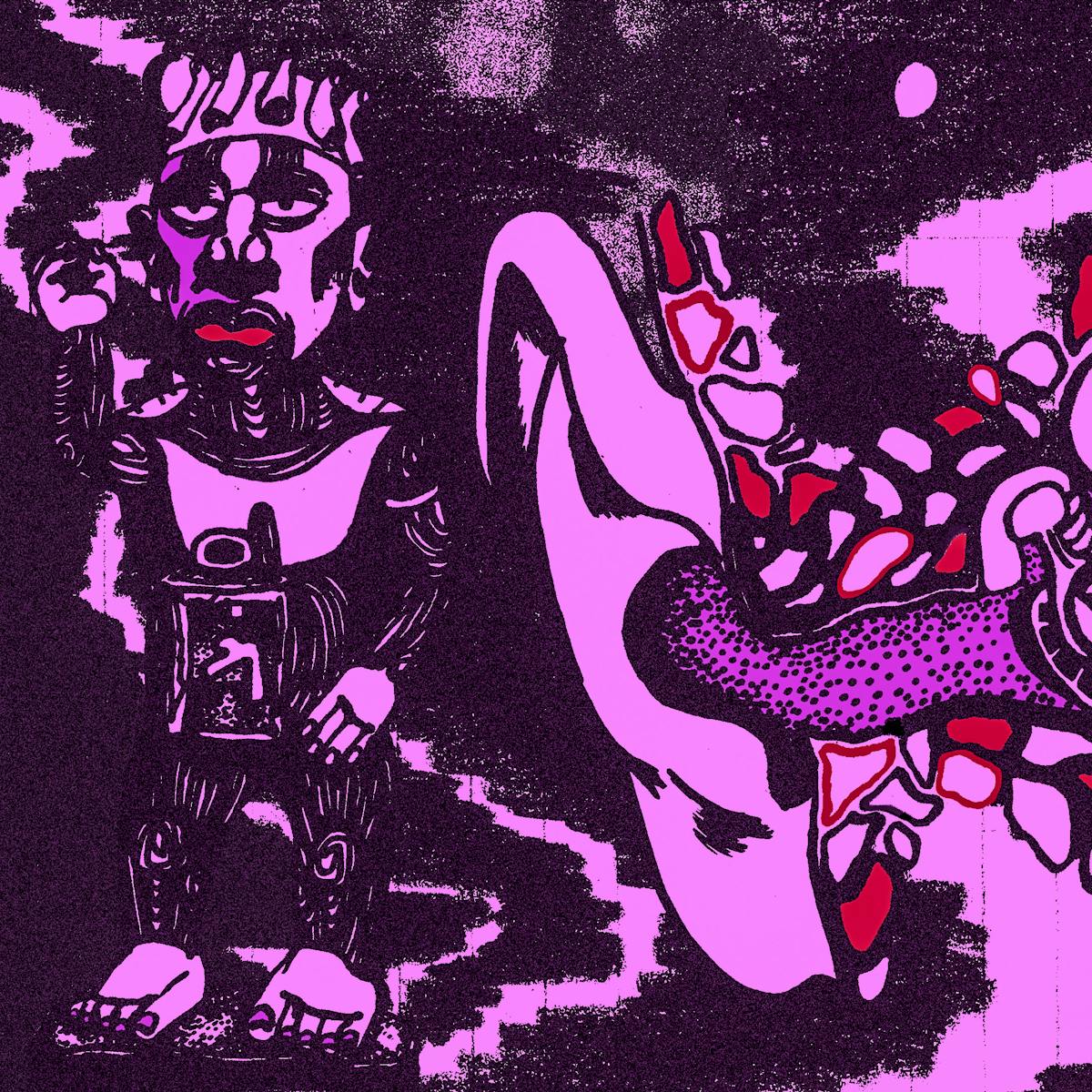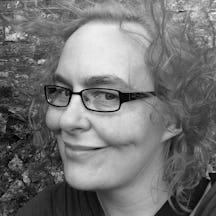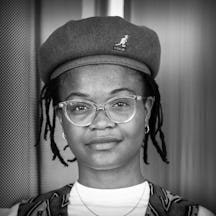Rai Waddingham hears voices. Doctors tried a variety of medications and labelled her with different diagnoses, but she eventually moved towards a greater understanding of her voices and why they are there. They are simply part of who she is.
Cracks that let the light in
Words by Rai Waddinghamartwork by Olivia Twistaverage reading time 6 minutes
- Article

I hear voices. Not my inner voice, my conscience or the lingering echoes of distant conversations. No, I really hear voices; I cannot silence them. I did not create them, and they are part of my world whether I like it or not.
It’s as if we’re passengers on a train, thrown together by fate with no stop in sight. Have you ever been stuck in a carriage with a screaming toddler, a person on the phone complaining about work and a couple sharing secrets in the seat behind you?
The voices I hear are not imaginary. Whatever their cause, they are as real to me as any other voice in this world of ours. I hear voices that you cannot.
The voices I hear are not imaginary. Whatever their cause, they are as real to me as any other voice in this world of ours.
Some of my voices are sweet. ‘Blue’ loves wombats. ‘Tommy’ gets annoyed when I am imprecise with my words or choose a different seat on the bus. He likes predictability, while I am irritatingly fluid. Some are scared; my past and present have plenty of dusty corners for monsters to hide.
Some of the voices I hear are threatening. The ‘Not Yets’ tell me to hurt people. ‘The Three’ provide an ongoing narration of my movements and the threats they perceive other people to pose. Some are just there – silent presences poorly represented by the term ‘hearing voices’. Communication is more than mere words, and these silent voices can feel the loudest when their emotional intensity reverberates around my skull.
In speaking out, I have been framed in many ways: victim; crazy; possessed; liar; survivor; potential murderer; object of curiosity; even as a unicorn – a lovely idea, but ultimately fictional. Despite hearing voices being relatively common, with one in twelve experiencing it at some point in their lives, few will recognise their friend, loved one or colleague in my words.
Labelled with a ‘broken brain’
As ‘out’ as I am, I cannot imagine sitting down next to a stranger and casually mentioning that one of my voices loves their child’s bag. Yet I could easily have the same conversation if I were to say that my daughter loved the bag. This silence maintains the distance needed to position voice-hearers as objects of fear, fascination or pity. We are enduringly ‘other’.
Why the silence? Here in the UK, voice-hearing in adults is often seen as synonymous with mental illness and the diagnosis of schizophrenia. Cast as victims of illness, with broken brains, beset by unfathomable voices and strange beliefs, we represent a dangerous question mark. Our voices symbolise a perceived vulnerability that could overwhelm us at any moment; we’re not inherently violent, yet not safe enough to date your son/daughter.
Even my psychiatrist told me I was a “ticking time bomb” when I decided to withdraw from medication and lived alongside my voices for ten years. Inferring my decision was immoral, she struggled to understand my reasoning.
My psychiatric notes contain plenty of evidence to label me as crazy and discredit my voice as that of an unreliable narrator. Yet, like a game of Chinese Whispers, these notes are a distant echo of my lived experience, stripped of meaning and context. They cast shadows that psychiatry misinterprets as truth.
By increments, over the last decade I have begun to see my voices as metaphors that reflect my experience of the world – past and present. The ‘Not Yets’ remind me of my potential to cause harm and my commitment to move through this world as intentionally as possible, making choices rather than going along with the crowd. ‘The Three’ reflect the hurt I’ve experienced outside of my family.
I know on a deep level that the world is far from safe, so I calm them by acknowledging this reality and thanking them for their clumsily spoken concern. Their response isn’t the point – it helps remind me of my own strength and solidity. I’ve (mostly) got this.
Limiting our understanding of voices to discussion of brain chemicals and cognition is like restricting our interest in art to the type of brushes used. It’s a valid level of analysis but is peripheral to our understanding of the painting itself.
Similarly, a deeper understanding of voices requires us to put aside our theories and listen to the person’s experience in all its messy subjectivity. This might sound radical, but an increasing body of research affirms that it is no longer tenable to dismiss voices as a meaningless symptom. Rather than search for an impossible ‘truth’, I’m more interested in perspectives that are generative and help people who hear voices live their lives.
Embracing my messiness
The idea of a broken brain almost killed me. It led to me becoming stuck in someone else’s story about me, a cardboard cut-out ‘schizophrenic’, feeling barely human. By luck, not design, I found the International Hearing Voices Movement and had the good fortune to occupy spaces where voice-hearing is seen as a human experience with many potential causes.
I found a sense of myself as a valid human being in my connections with others. I began to shed the judgements, assumptions and prejudice I’d internalised, and started to view my experiences with pride.
In 1998 something broke inside me; something that had been cracked many times before and was desperately holding together with bits of sticky tape. The idea that this brokenness needed fixing in order to make me whole was the tune my whole life danced around in the next decade. Now, still broken, I make art out of the shards of my soul – embracing my messiness rather than trying to reconstruct myself in the image of my past.
My voices are not the cracks in my heart; they are part of what exists in the space between.
Menachem Mendel of Kotzk, a 19th-century Polish rabbi, said: “There is nothing so whole as a broken heart.” From a biological stance, this quote is senseless – yet a more symbolic reading suggests layers of meaning. It challenges our understanding of what it is to be broken, suggesting growth rather than limitation.
My voices are not the cracks in my heart; they are part of what exists in the space between. They are a reaction to the cracks that difficult life experiences created when they were too painful for a single heart to bear. Now, as an adult, the voices hold responses to a world I find crazy-making, helping me commit to being in it and trying to make a difference rather than becoming overwhelmed.
By creating space in my heart for others, my cracks enable me to resonate with pain, isolation and fear. They do not need to be fixed.
I am not whole. I am definitely not perfect. But I am more than I was before the breaks.
About the contributors
Rai Waddingham
Rai Waddingham is an international trainer, Open Dialogue practitioner, Chair of the National Hearing Voices Network, Vice Chair of ISPS UK (International Society for Psychological and Social Approaches to Psychosis), a PhD student and a mum. Her lived experience and the collective wisdom of the Hearing Voices Movement provides an ethical compass for all her work.
Olivia Twist
Olivia Twist is an illustrator, arts facilitator and lecturer from east London with an MA in Visual Communication from the Royal College of Art. The key threads that can be found in her work are place, the mundane and overlooked narratives. Her striking visual language is comprised of a myriad of esoteric layers informed by a propensity for human-centered research methodologies.

